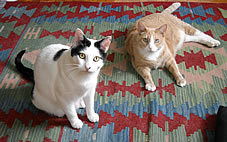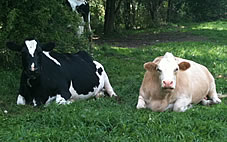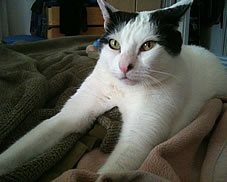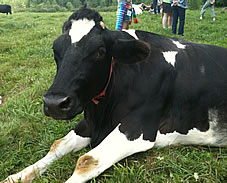
My teenage niece and nephew, who may actually live in the world of Glee, just came to the city to see Wicked on Broadway. They turned me on to the soundtrack, which got me thinking about how great the book was.

Wicked is the backstory of The Wizard of Oz, specifically the origins of the Wicked Witch of the West (a.k.a. Elphaba). It also turns out to be about animal rights! In Oz, Animals (uppercase A) are highly conscious beings who experience discrimination:
Wicked … rests oddly on a kind of closeted audience sympathy with animal liberation politics. The context of Elphaba’s story is that a reactionary movement is mobilizing to rob Oz’s animals of their ability to speak, implementing a regime of cages and injections that looks more like today’s America than that technicolor world that gave us the Cowardly Lion.
Elphaba seems to be the only one who resists this movement, which Wicked suggests will lead to the end of all magic in Oz–the annexation of Oz into modern civilization. Elphaba’s green skin makes her a creature of magic herself, of course, and so she has something in common with the talking animals on that score. But here’s the rub: Wicked generates huge sympathy for Elphaba, and it does it by portraying her as what boils down to an animal-rights insurgent, who eventually occupies a Zapatista-like role as a black-clad warrior who hides in the forests between her battles with the state.
And people love her for it. Somewhere, deep down in the psyche of Wicked‘s audience, strong sympathies for animals and those who fight for their freedom may lie. I don’t think the story would work without them.
Here’s Elphaba with Dr. Dillamond, a dapper and distinguished goat.

Dillamond is a biology professor at Shizz (the university Elphaba and Glinda attend). His research aims to prove that Animal and human consciousness are on the same level and even as his voice is disappearing, he enlists Elphaba to work on an “Extract of Biological Intention” as the basis of his proof.
It’s so clever that the animals are losing their voices, suggesting some highly evolved society in which they have voices in the first place. At the same time Oz is a totalitarian state whose leaders are desperately trying to hold on to their ways and resist “modern civilization.”
Oz is large; it contains multitudes.
















